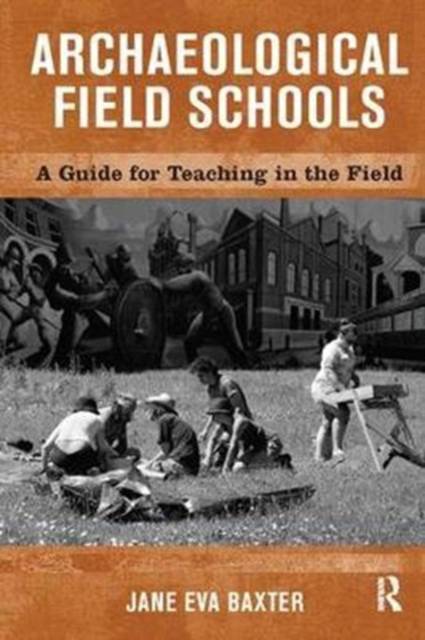
Door een staking bij bpost kan je online bestelling op dit moment iets langer onderweg zijn dan voorzien. Dringend iets nodig? Onze winkels ontvangen jou met open armen!
- Afhalen na 1 uur in een winkel met voorraad
- Gratis thuislevering in België vanaf € 30
- Ruim aanbod met 7 miljoen producten
Door een staking bij bpost kan je online bestelling op dit moment iets langer onderweg zijn dan voorzien. Dringend iets nodig? Onze winkels ontvangen jou met open armen!
- Afhalen na 1 uur in een winkel met voorraad
- Gratis thuislevering in België vanaf € 30
- Ruim aanbod met 7 miljoen producten
Zoeken
€ 243,45
+ 486 punten
Uitvoering
Omschrijving
The field school is often described as arite of passage among archaeologists. They are considered essential for the appropriate training of students for academic or professional archaeological careers, and are perhaps the only universal experience in an increasingly diverse array of archaeological career paths. Jane Baxter's practical guide about how to run a successful field school offers archaeologists ways to maximize the educational and training benefits of these experiences. She presents a wide range of pedagogical theories and techniques that can be used to place field schools in an educational, as well as an archaeological, context. Baxter then offers ahow to guide for the design of field schools, including logistical, legal, and personnel issues as well as strategies for integrating research and teaching in the field. Replete with checklists, forms, and cogent examples, the author gives directors and staff a set ofbest practices for designing and implementing a school.
Specificaties
Betrokkenen
- Auteur(s):
- Uitgeverij:
Inhoud
- Aantal bladzijden:
- 192
- Taal:
- Engels
Eigenschappen
- Productcode (EAN):
- 9781138404441
- Verschijningsdatum:
- 27/07/2017
- Uitvoering:
- Hardcover
- Formaat:
- Genaaid
- Afmetingen:
- 152 mm x 229 mm
- Gewicht:
- 452 g

Alleen bij Standaard Boekhandel
+ 486 punten op je klantenkaart van Standaard Boekhandel
Beoordelingen
We publiceren alleen reviews die voldoen aan de voorwaarden voor reviews. Bekijk onze voorwaarden voor reviews.











